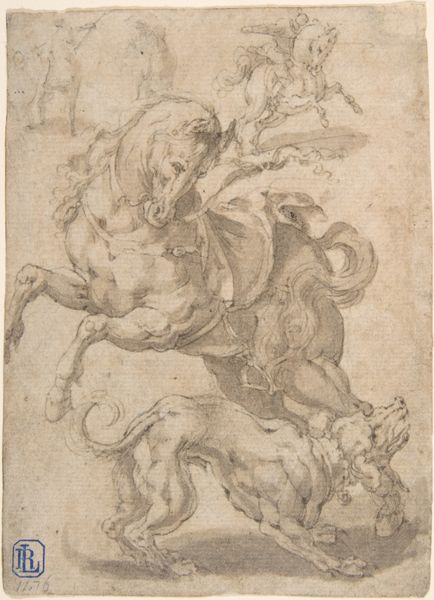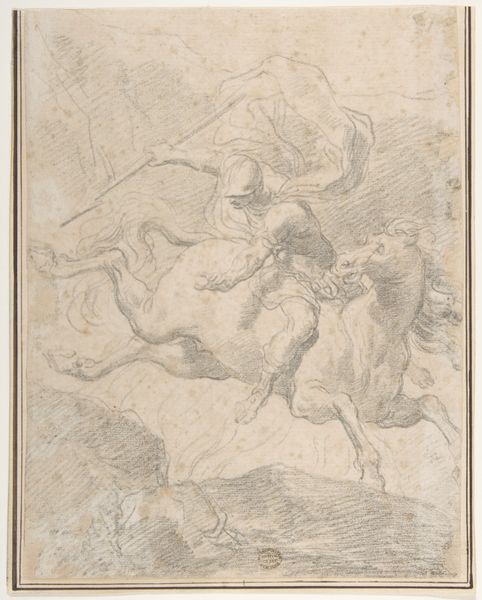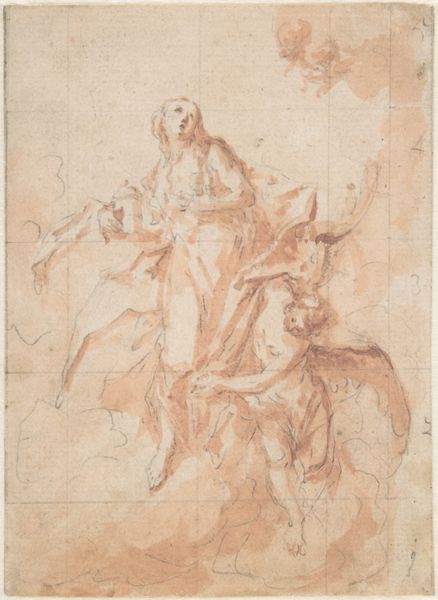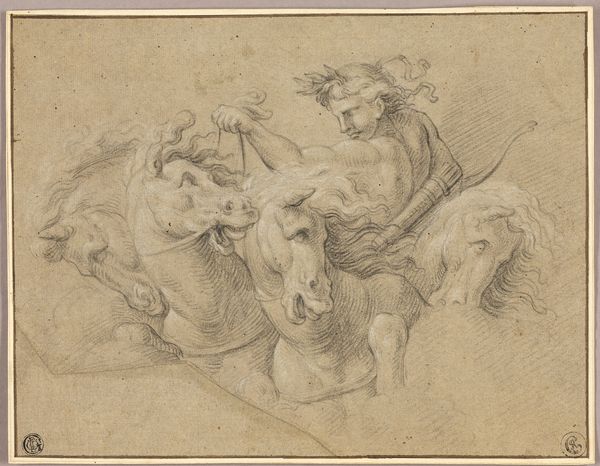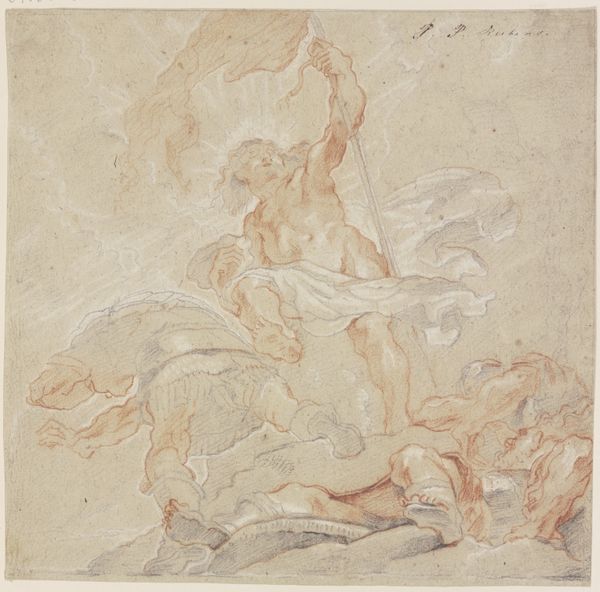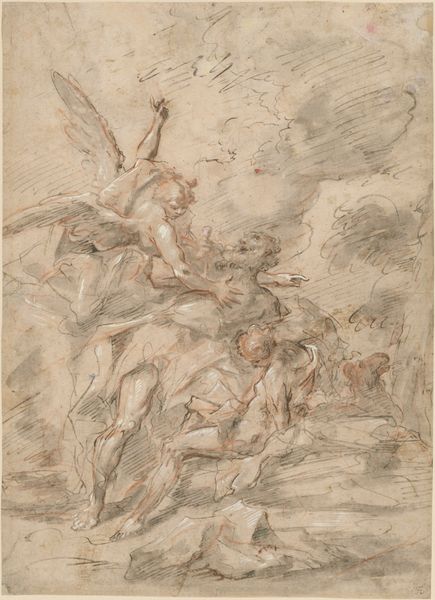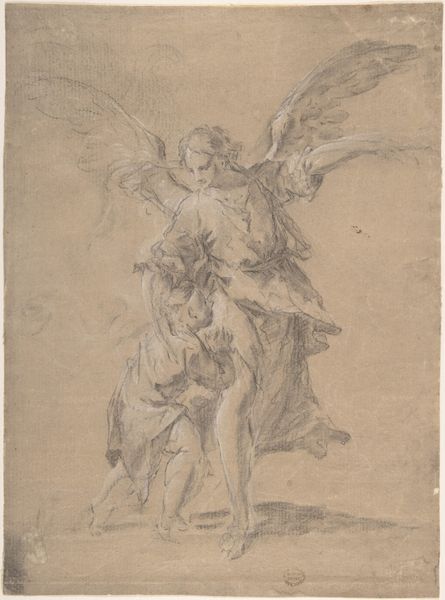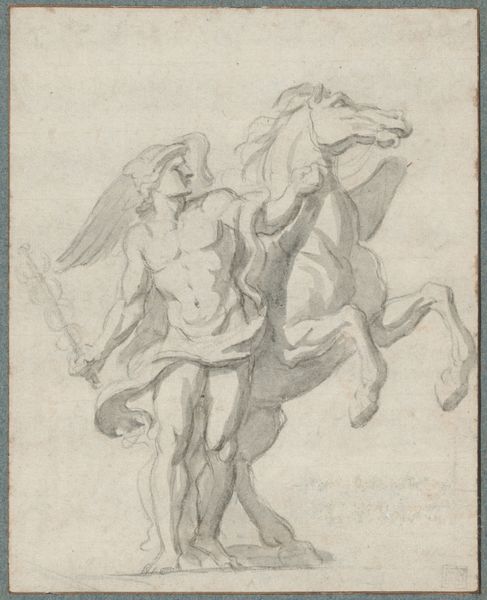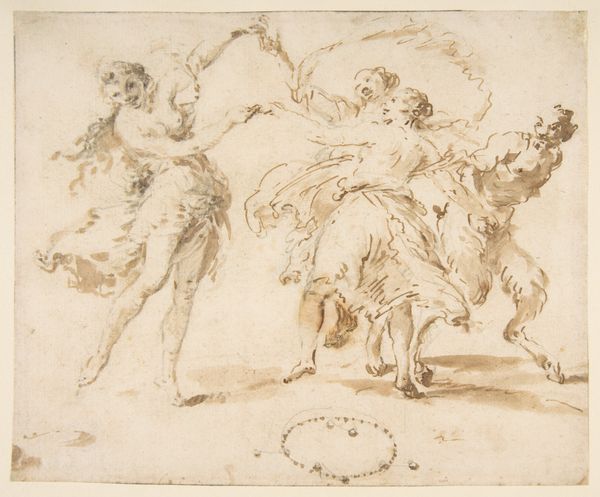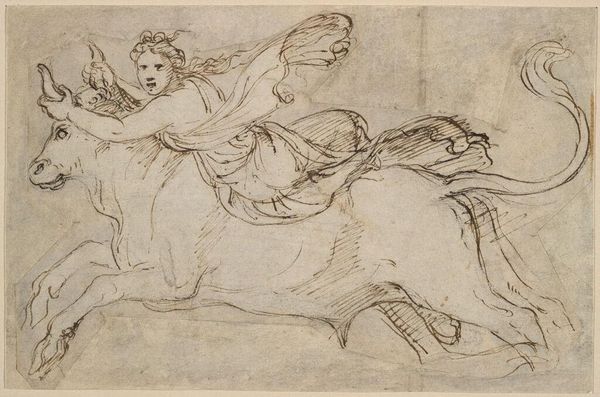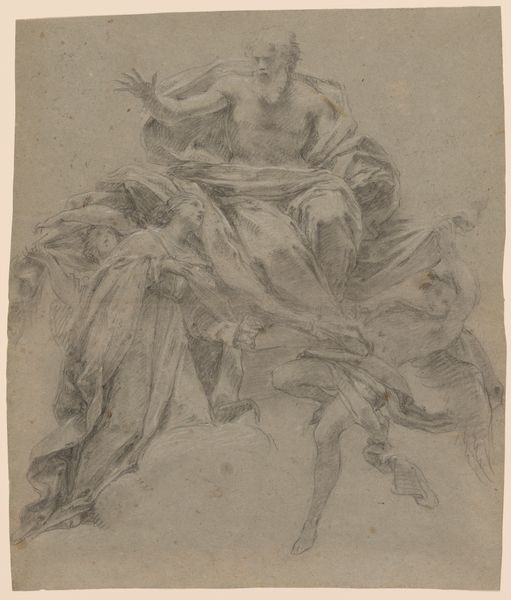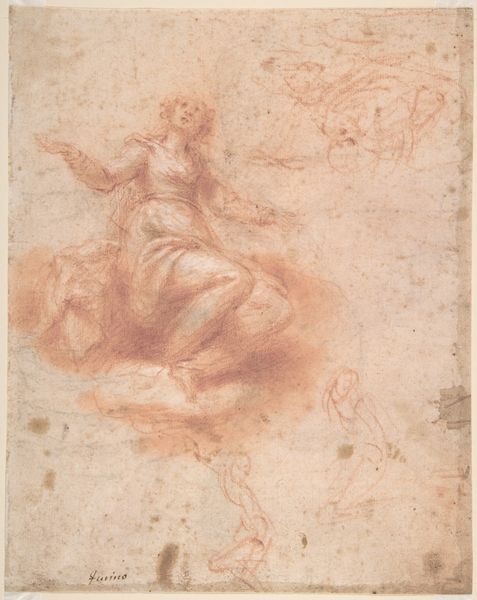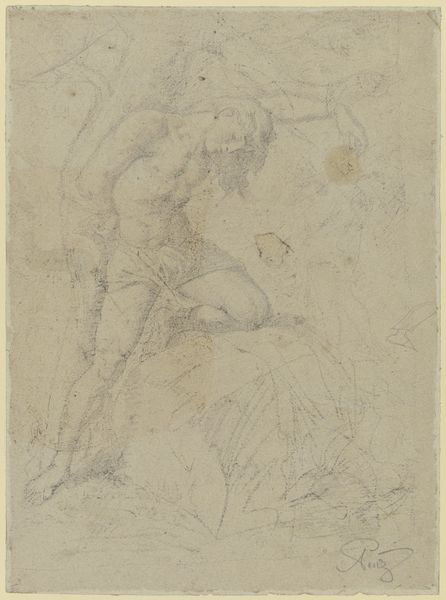
drawing, print, metal, etching, intaglio, paper, pencil, engraving
#
drawing
# print
#
metal
#
etching
#
intaglio
#
etching
#
figuration
#
paper
#
11_renaissance
#
pencil
#
horse
#
men
#
pencil work
#
history-painting
#
italian-renaissance
#
engraving
Dimensions: 5 3/4 x 5 1/8 in. (14.6 x 13 cm)
Copyright: Public Domain
Curator: This is Jost Amman’s "Marcus Curtius," an etching likely created between 1540 and 1591. It depicts a scene from Roman history. Editor: The first impression is dramatic. Look at that plunge, the sense of depth is very strong. Amman has created real tension with just a few skillfully rendered lines. Curator: Indeed, the image shows Curtius, a Roman soldier, plunging into a chasm to save Rome. His sacrifice speaks to Roman ideals of civic duty and selflessness. We have to contextualize it within the rise of humanism and renewed interest in classical virtues during the Renaissance. Editor: Yes, there's certainly a narrative aspect. But observe how the spiraling composition draws the eye downward. Note the dynamism in the horse's musculature, echoing the soldier's form and emphasizing motion. The contrast between the solidity of the figures and the swirling vortex below. What does this mean for the symbolic reading? Curator: These graphic choices powerfully dramatize Curtius' act, symbolizing Rome's tumultuous internal conflicts resolved only through the citizen's willingness to perform their role. And that willingness may extend to giving up oneself to contribute to social cohesion. It really echoes through history into political theory, then and now. Editor: The stark medium of etching contributes to the drama too. Those bold lines delineate form efficiently. There’s a minimalist, essential quality that underscores the narrative's core sacrifice. Curator: Right, etching makes prints available and affordable for an audience of laypeople to take an interest in moral instruction. The print functions as propaganda to inspire allegiance to community. Editor: So, in dissecting line, form and symbolic depth, we’ve touched on a timeless paradox. Sacrifice can unite even as it signifies personal loss. Curator: It illustrates how studying history painting from different standpoints allows a critical and profound comprehension. The Italian Renaissance wasn't just pretty pictures; it represented social and political concepts which reflect to this day.
Comments
No comments
Be the first to comment and join the conversation on the ultimate creative platform.
